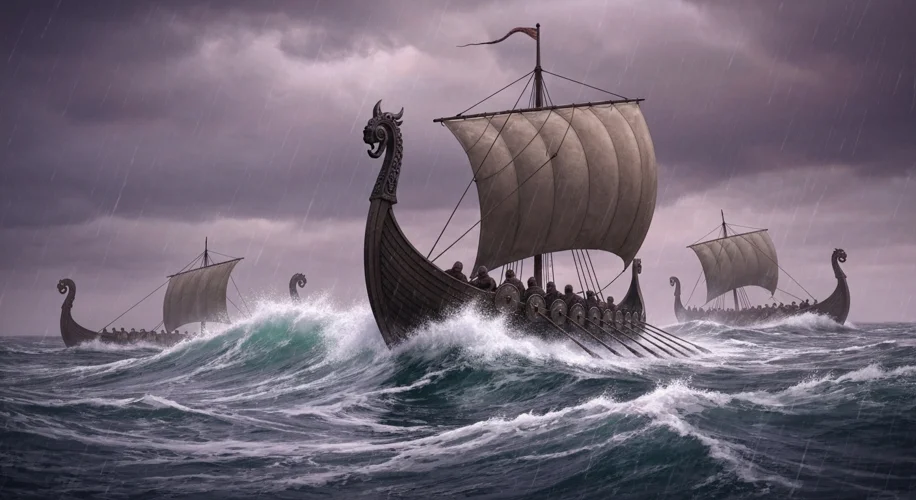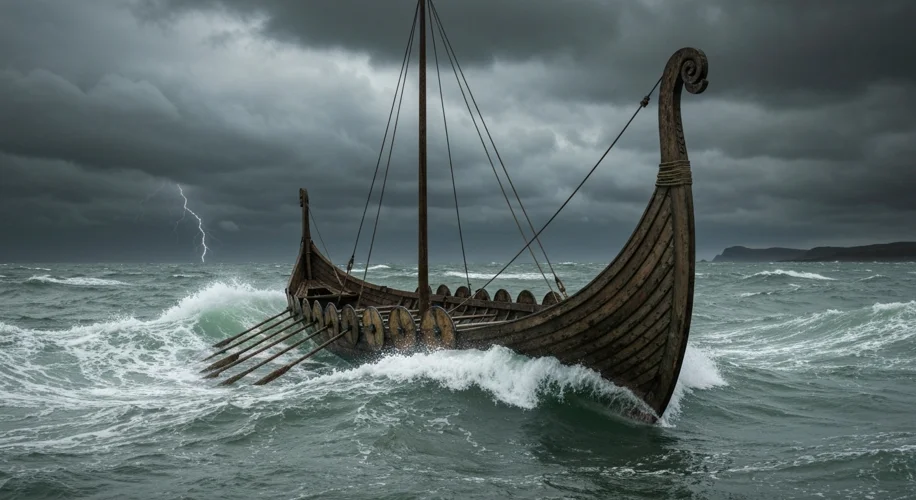The salt spray stinging their faces, the rough-hewn timber of their longships groaning under the strain, the Vikings were a force that reshaped the map of early medieval Europe. For centuries, these Norse seafarers, merchants, and warriors carved their sagas into the very fabric of history, leaving behind a legacy as enduring as the cold northern seas from which they hailed.
From their Scandinavian homelands, beginning roughly in the late 8th century, the Viking Age erupted not as a sudden cataclysm, but as a gradual expansion driven by a potent mix of ambition, economic necessity, and a thirst for adventure. Imagine the scene: a farmer, perhaps named Ragnar, gazing out at the grey, choppy waters, his village struggling with limited arable land and a growing population. The tales brought back by returning sailors spoke of riches, fertile lands, and opportunities beyond the familiar fjords.

Their ships, the legendary longships, were marvels of engineering. Sleek, shallow-drafted, and versatile, they could navigate both the open ocean and shallow rivers, allowing the Vikings to strike deep into the heart of kingdoms previously thought impenetrable. Their initial raids, such as the infamous sacking of the monastery at Lindisfarne in Northumbria in 793 AD, sent shockwaves across Christian Europe. These were not mere acts of wanton destruction; they were calculated strikes, often targeting wealthy religious sites for their portable treasures and enslaved people.
But to label the Vikings solely as brutal raiders would be a grave historical oversimplification. Alongside the warrior, there was the skilled trader and the industrious settler. The Viking sphere of influence stretched from the frosty reaches of Greenland and North America (where they established a settlement called L’Anse aux Meadows in Newfoundland around 1000 AD, centuries before Columbus) to the bustling markets of Byzantium and the Abbasid Caliphate. They traversed vast distances, establishing intricate trade networks that exchanged goods like furs, amber, walrus ivory, and slaves for silver, silk, spices, and weapons.
Consider the impact on Britain. Viking incursions led to the establishment of the Danelaw, a large area of England under Viking rule, significantly influencing English language, law, and culture. Cities like York (Jorvik) became thriving centers of commerce and administration. Their settlement patterns were not always aggressive; in many areas, they integrated with the local populations, intermarrying and adopting customs, leaving a deep imprint on the genetic and cultural landscape.
Their westward expansion is perhaps one of the most astonishing feats. Led by figures like Erik the Red, who settled Greenland in the late 10th century, and his son Leif Erikson, the Vikings reached the shores of North America, which they called Vinland. While these settlements were ultimately short-lived, their discovery of a new continent is a testament to their unparalleled seafaring prowess and insatiable curiosity.
What was it about these Norsemen that allowed them to achieve such widespread influence? Their society was structured around kinship, honor, and a complex mythology that glorified courage and a warrior ethos. The sagas, rich with tales of gods like Odin and Thor, and heroes who faced insurmountable odds, provide a window into their worldview. Their legal systems, though often harsh, emphasized community responsibility and the pursuit of justice, albeit through a lens of personal vengeance and feuds.
The legacy of the Viking Age is multifaceted. They were explorers who charted new territories, traders who connected disparate economies, and settlers who laid foundations for future kingdoms. Their impact can still be felt today, from the place names and languages in regions they inhabited to the genetic makeup of modern populations. The image of the horned helmet, though largely a later romanticized invention, pales in comparison to the historical reality of a dynamic, complex society that dared to sail into the unknown, leaving an indelible mark on the tapestry of human history.

